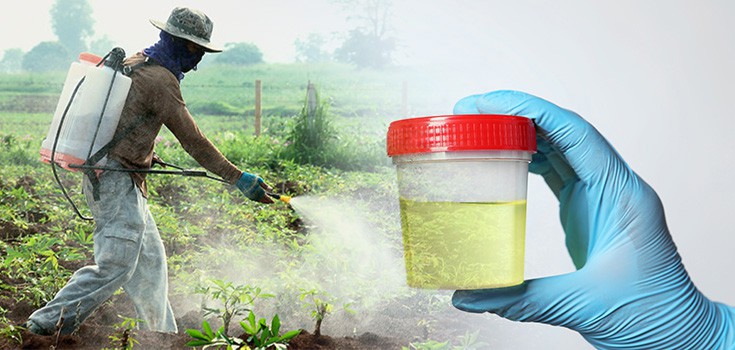Glyphosate in Monsanto’s Roundup Found in All Urine Samples Tested

A 2011 study conducted by a German university found very high concentrations of glyphosate, a chemical found in herbicides like Monsanto’s Roundup, in all urine samples tested. The amount of glyphosate found in the urine was staggering, with each sample containing concentrations at 5 to 20-fold the limit established for drinking water.
This is just one more piece of evidence that herbicides are, at the very least, being sprayed out of control.
2014 Study Finds Glyphosate in Animals and Humans
Another 2014 study published in the Journal of Environmental & Analytical Toxicology also proved that animals and humans who consume GMO foods – those that are loaded with glyphosate – have high levels of glyphosate in their urine. Further, chronically ill people had even greater levels of the herbicide in their urine.
Conversely, people who eat primarily organic foods, and animals that are given feed from non-GMO plants, have lower levels of glyphosate in their urine.
The study abstract concluded with:
“The presence of glyphosate residues in both humans and animals could haul the entire population towards numerous health hazards, studying the impact of glyphosate residues on health is warranted and the global regulations for the use of glyphosate may have to be re-evaluated.”
They also said:
“Negative impact on the body is insidious and manifests slowly over time.”
Read how glyphosate is showing up in urine, blood, and breast milk.
Yet Another Glyphosate-Urine Link
A 2019 study published in the journal JAMA showed once again that levels of glyphosate in human urine have increased dramatically in the past 20 years. This time in Californians.
For the study, urine samples were collected from 100 Southern California residents over the age of 50 from 1993-1996, to 2014-2016.
Paul Mills, professor of family medicine and public health at the University of California San Diego, and a team of researchers found that the percentage of people who tested positive for glyphosate skyrocketed 500% during that period. The levels of glyphosate also spiked 1,208% during those years.
During the early phase of the study, Mills said:
“there were very low levels – and they were only detectable in 12 out of 100 people. Then over the next 22 years, we found about a 1,000% increase in the levels found in the 100 people, on average.”
Prenatal glyphosate exposure has been linked to shorter gestation times and lower birth weights in babies. Some research suggests, too, that the chemical may be generating deadly antibiotic resistance.
A couple of other studies had different results, finding low levels in their research.
Glyphosate in Monsanto’s Roundup Impacting Global Health
Monsanto continues to claim that its Roundup products are completely safe for both animals and humans. However many environmentalists, scientists, activists, and even doctors say otherwise.
Glyphosate radically affects the metabolism of plants in a negative way. It is a systemic poison preventing the formation of essential amino acids, leading to weakened plants that ultimately die from it.
Researchers also tested Roundup on mature male rats at a concentration range between 1 and 10,000 parts per million (ppm) and found that within 1 to 48 hours of exposure, testicular cells of the mature rats were either damaged or killed. Even at a concentration of 1 ppm, Roundup was able to affect the test subjects by decreasing their testosterone concentrations by as much as 35%.
